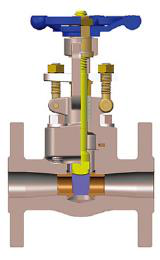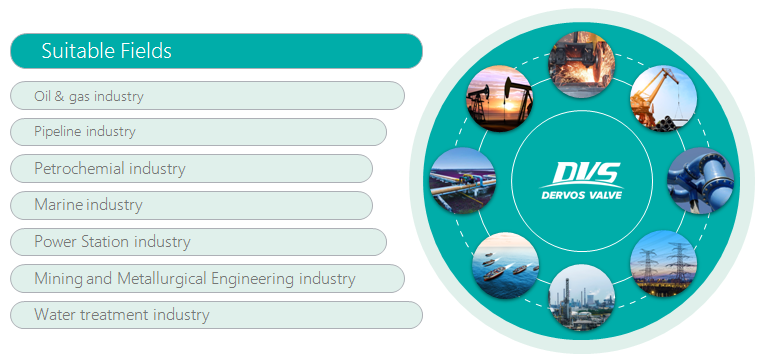China Welded Bonnet Gate Valve Producer Fabricates Reduced Bore Forged Steel Gate Valve, A105N, 1/2-4 Inch, 150-1500 LB, Welded Bonnet, Integral Flanged.
Payment:
30% when order confirmed, 70% before shipmentProduct Origin:
ChinaColor:
CustomizationShipping Port:
Shanghai, ChinaLead Time:
30~60 days Ex Works after order confirmationMaterial:
Forged SteelMethod of Operation:
HandwheelKey Specifications / Features
Type: Reduced Bore Forged Steel Gate Valve.
Material: A105N, etc.
Valve Size: 1/2 - 4 Inch.
Applicable Pressure Rating: Class 150 LB - 1500 LB.
Temperature Rating: Up to 500℃.
Molding Style: Forging.
FORGED STEEL FLANGED GATE VALVE - Outside Screw & Yoke, Bolted Bonnet
STANDARD MATERIALS:
|
|
PART NAMES |
MATERIALS |
|
BODY |
A105; LF2; F5; F22; F304; F304L; F304; F316L; F347; F321; F51; F55; Inconel; Monel; Hastelloy; etc. |
|
|
BONNET |
A105; LF2; F5; F22; F304; F304L; F304; F316L; F347; F321; F51; F55; Inconel; Monel; Hastelloy; etc. |
|
|
SEAT |
ASTM A276 410 + HF |
|
|
WEDGE |
ASTM A276 420 |
|
|
STEM |
ASTM A276 410 |
|
|
GASKET |
304 + GRAPHITE |
|
|
HANDWHEEL |
ASTM A197 |
|
|
PACKING |
GRAPHITE |
|
|
GLAND |
ASTM A276 410 |
 |
PRESSURE TEST ( A105 ) |
||||
|
CLASS |
SHELL (psig) |
BACKSEAT(psig) |
SEAT(psig) |
||
|
WATER |
WATER |
AIR |
WATER |
||
|
150LB |
450 |
325 |
90 |
- |
|
|
300LB |
1125 |
825 |
- |
||
|
600LB |
2225 |
1650 |
- |
||
|
800LB |
2975 |
2175 |
- |
||
|
900LB |
3350 |
2450 |
- |
||
|
1500LB |
5575 |
4100 |
- |
||
Design and Manufacture Conform to: API 602, BS5352, ASME B16.34/ B16.5.
Structure Features:
★ End Connection: Flanged Type.
★ Outside Screw & Yoke, Bolted Bonnet.
★ Reduce Bore.
★ Rising Stem / Non-Rising Handwheel.
DVS Product Application
Dervos valves can be widely used in varieties of industries, such as petrochemical, pipeline, oil & gas, marine, water treatment, power station industries and etc.

If you are interested in our products and want to know more details,please leave a message here,we will reply you as soon as we can.